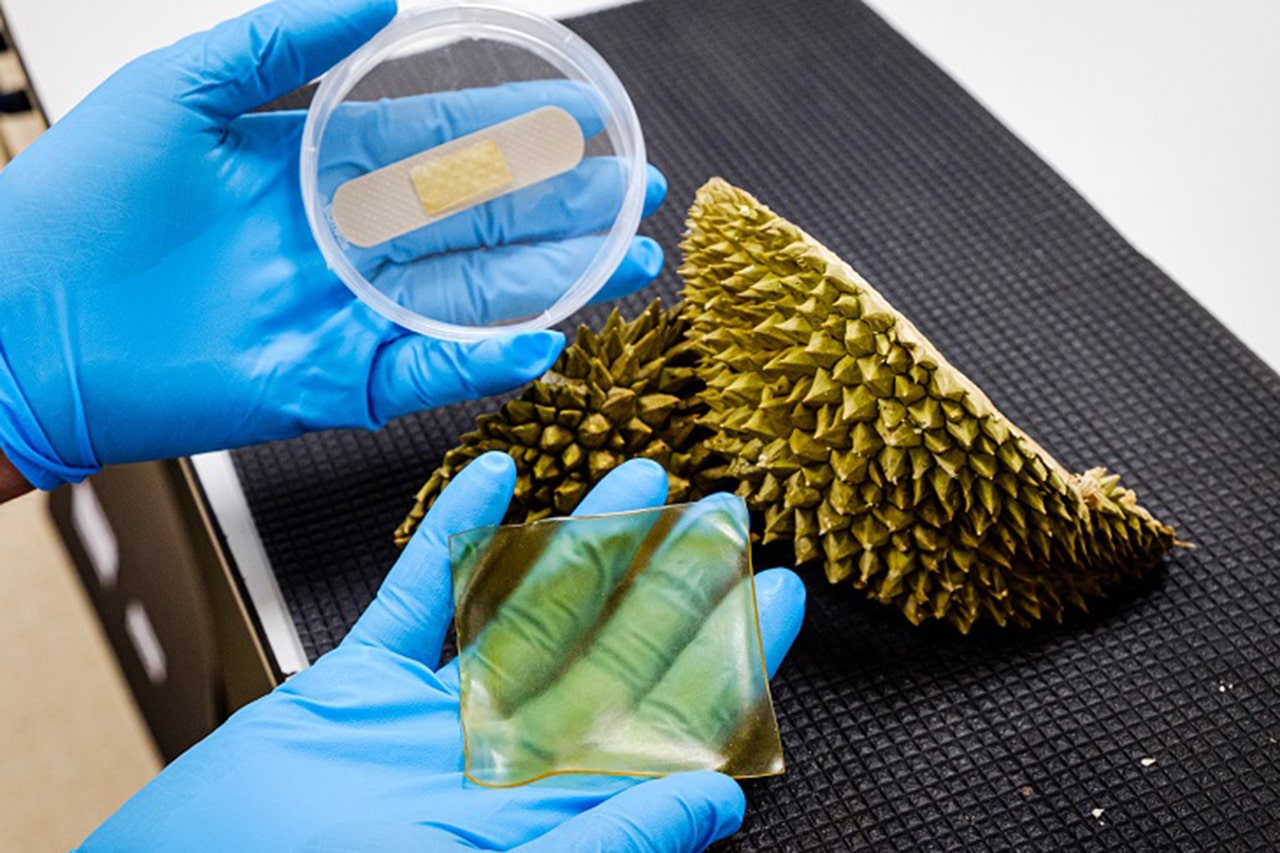
Hydrogels synthesized from naturally derived raw materials are attracting increasing attention as compared to synthetic hydrogels. By using waste products such as durian husks and glycerol, which are currently discarded in large quantities, scientists could turn waste into a valuable biomedical resource that can enhance the speedy recovery of wounds and reduce chances of infections.
Considering the idea, scientists from Nanyang Technological University, Singapore (NTU Singapore) used durian husk and glycerol to create an antibacterial gel bandage.
The tropical fruit durian is also known as King of Fruits” in Southeast Asia. It has a thick husk with spiky thorns. There is the sweet flesh surrounding the seeds on the inside. Its spiky thorns are discarded in large quantities.
Scientists extracted high-quality cellulose from the hosts and then combined it with glycerol to create a soft gel. They then cut the gel into bandages of different sizes and shapes.
By adding the organic molecules produced from natural yeast phenolics, scientists could make the bandage deadly to bacteria. The wild yeast phenolics in the bandage will help prevent bacteria’s growth, such as Gram-negative E. coli and Gram-positive S. aureus. and the subsequent formation of biofilm.
Being non-toxic and biodegradable, the organic gel bandage is also expected to have a smaller environmental footprint than conventional synthetic bandages.
Associate Professor Andrew Tan, Vice Dean (Faculty) from NTU’s Lee Kong Chian School of Medicine, who is an expert in metabolic disorders, said, “there are existing natural and synthetic hydrogels on the market now, where their usefulness in the healing of some types of wounds are well-recognized.”
“Hydrogel bandages are known for their non-toxicity, ability to rehydrate the wound bed, and can facilitate autolytic debridement (where the body enzymes and natural fluids act to soften bad tissue and remove it). The innovative and unique part of Prof Chen’s current work is the upcycling of the durian rind to obtain cellulose. It’s also unique given that the thorns of the durian can hurt, but the materials from the rind can heal.”
Scientists tested their bandages on an animal skin. They applied the bandage- by simply laying it across the wound. They found that the bandage showed good antimicrobial effects for up to 48 hours.
Journal Reference:
- Xi Cui et al. Food Waste Durian Rind-Derived Cellulose Organohydrogels: Toward Anti-Freezing and Antimicrobial Wound Dressing. DOI: 10.1021/acssuschemeng.0c07705
Continue reading Scientists developed antibacterial gel bandage using durian husk on Tech Explorist.
0 comments:
Post a Comment